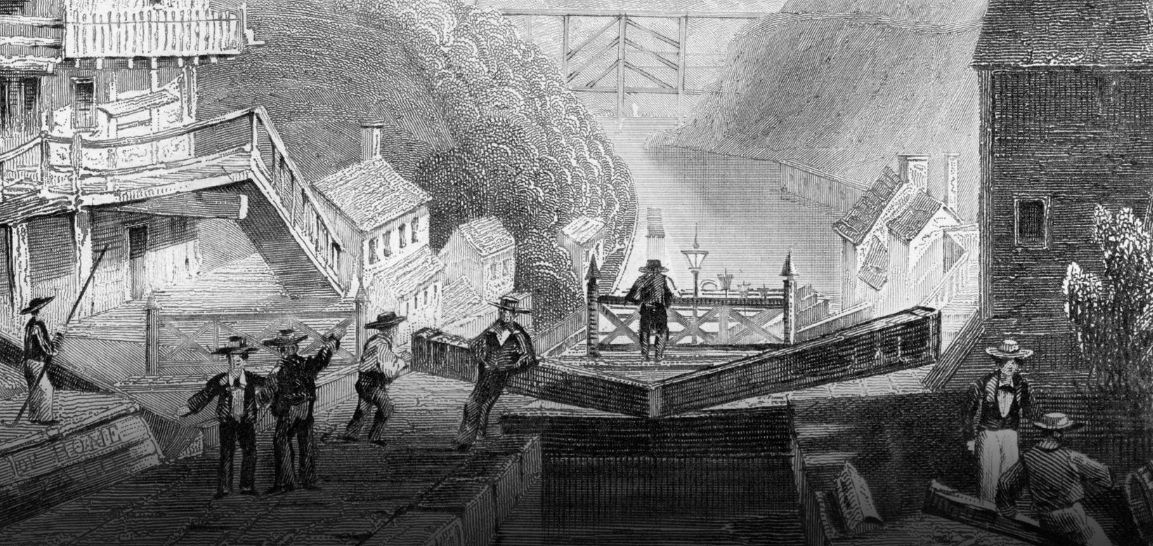The Erie Canal stands as an engineering marvel of the 19th century, linking the Great Lakes to the Atlantic Ocean and transforming trade and transportation in the United States.
While its direct impact was felt along its route, its influence extended far beyond. One city that experienced a profound transformation due to the Erie Canal was Detroit. In this article, we will explore the eerie canal and its effect on the growth and development of Detroit.
The Construction of the Erie Canal
The construction of the Erie Canal, which began in 1817 and was completed in 1825, was an audacious undertaking that connected the Hudson River in New York to Lake Erie. The canal spanned approximately 363 miles, consisting of a series of locks, aqueducts, and channels. This remarkable feat of engineering opened up new trade routes and facilitated the movement of goods between the Great Lakes region and the eastern seaboard. Detroit, located on the western end of Lake Erie, was poised to benefit greatly from this transformative project.
Economic Impact on Detroit
The completion of the Erie Canal revolutionized Detroit’s economy. Prior to the canal’s opening, the transportation of goods to and from Detroit was primarily dependent on cumbersome overland routes. The canal provided a more efficient and cost-effective means of transportation. As a result, Detroit experienced a significant increase in trade and commerce. The canal connected Detroit to major markets in the east, allowing local industries to thrive and expand. The city became a bustling hub of trade, attracting merchants, investors, and entrepreneurs who saw the potential for growth and profit.
Population Growth and Cultural Exchange
The economic boom brought about by the Erie Canal led to a rapid influx of immigrants and settlers to Detroit. The city’s population swelled as people from various backgrounds and ethnicities sought opportunities for a better life. Immigrants, particularly from Europe, arrived in Detroit, bringing with them their unique skills, traditions, and cultural influences. This cultural exchange enriched the fabric of the city, contributing to its diversity and fostering a vibrant social atmosphere.
Industrialization and Manufacturing
With increased access to raw materials and markets, Detroit experienced a shift towards industrialization. The Erie Canal played a crucial role in fueling this transformation. The waterway provided a means to transport resources, such as lumber, iron, and coal, essential for the growth of manufacturing industries. Detroit became a center for automobile production in the early 20th century, propelled by its strategic location and the foundation laid by the Erie Canal. The canal’s impact on Detroit’s industrial growth cannot be overstated.
Legacy and Modern Significance
Although the Erie Canal’s influence on Detroit has diminished over time, its legacy remains ingrained in the city’s history. The economic opportunities and industrial development catalyzed by the canal set the stage for Detroit’s rise as the “Motor City” and a global manufacturing powerhouse. The Erie Canal’s enduring impact on Detroit serves as a reminder of the transformative power of infrastructure and the ability of visionary projects to shape the destiny of cities.
The Erie Canal had a profound effect on Detroit, revolutionizing its economy, spurring population growth, and contributing to its industrialization. The canal provided Detroit with improved access to markets and resources, positioning it as a vital trade center and paving the way for its future as an industrial powerhouse. Today, the Erie Canal’s legacy stands as a testament to the transformative power of infrastructure projects and their lasting impact on the growth and development of cities like Detroit.


